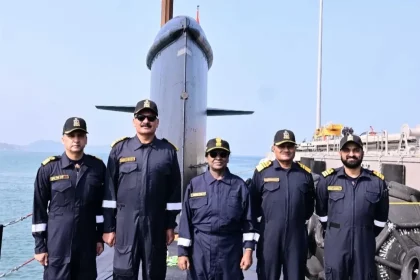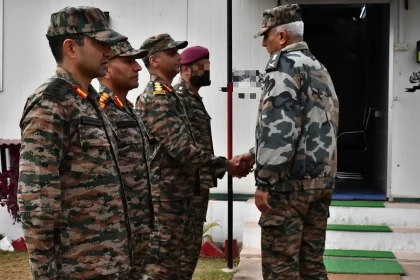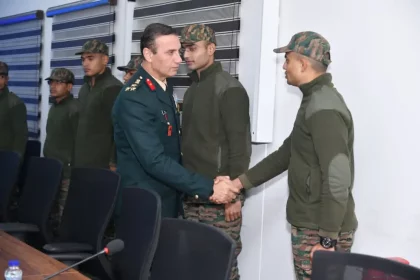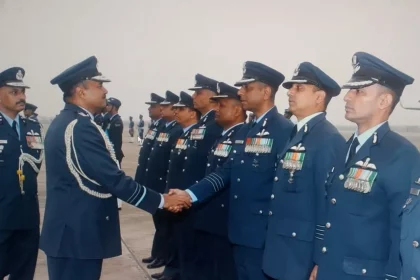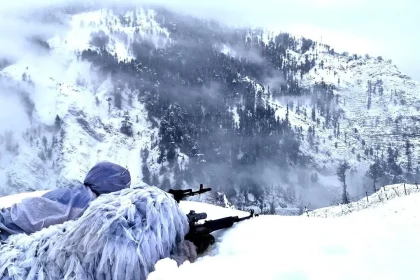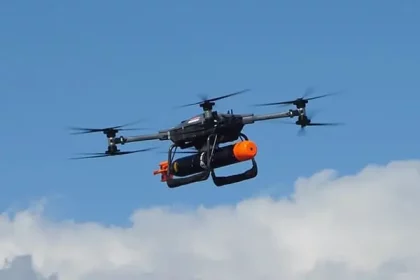President Droupadi Murmu Undertakes Submarine Sortie Aboard INS Vaghsheer
“Our submarines and the Indian Navy are combat-ready against any threat,” says the President.
Lt Gen Rajan Sharawat Reviews Operational Preparedness of Troops in Bani–Machhedi Sector
Review underscores Rising Star Corps’ focus on high operational readiness.
OTA Gaya Officer Cadets Visit Junior Leaders Academy, Bareilly
Brigadier Gaurav Kapoor highlights critical role of Junior Leaders in future battlefields.
Air Marshal B Manikantan Reviews Operational Readiness at Air Force Station Agra
AOC-in-C Central Air Command lauds preparedness; AFFWA welfare initiatives also reviewed.
Army Intensifies Winter Operations in J&K to Flush Out Pakistani Terrorists
Proactive winter posture adopted to deny terrorists shelter during Chillai Kalan.
Apollo Micro Systems Bags ₹100 Crore Defence Order for Unmanned Aerial Systems
UAS supplies to Ministry of Defence to be completed within four months.

